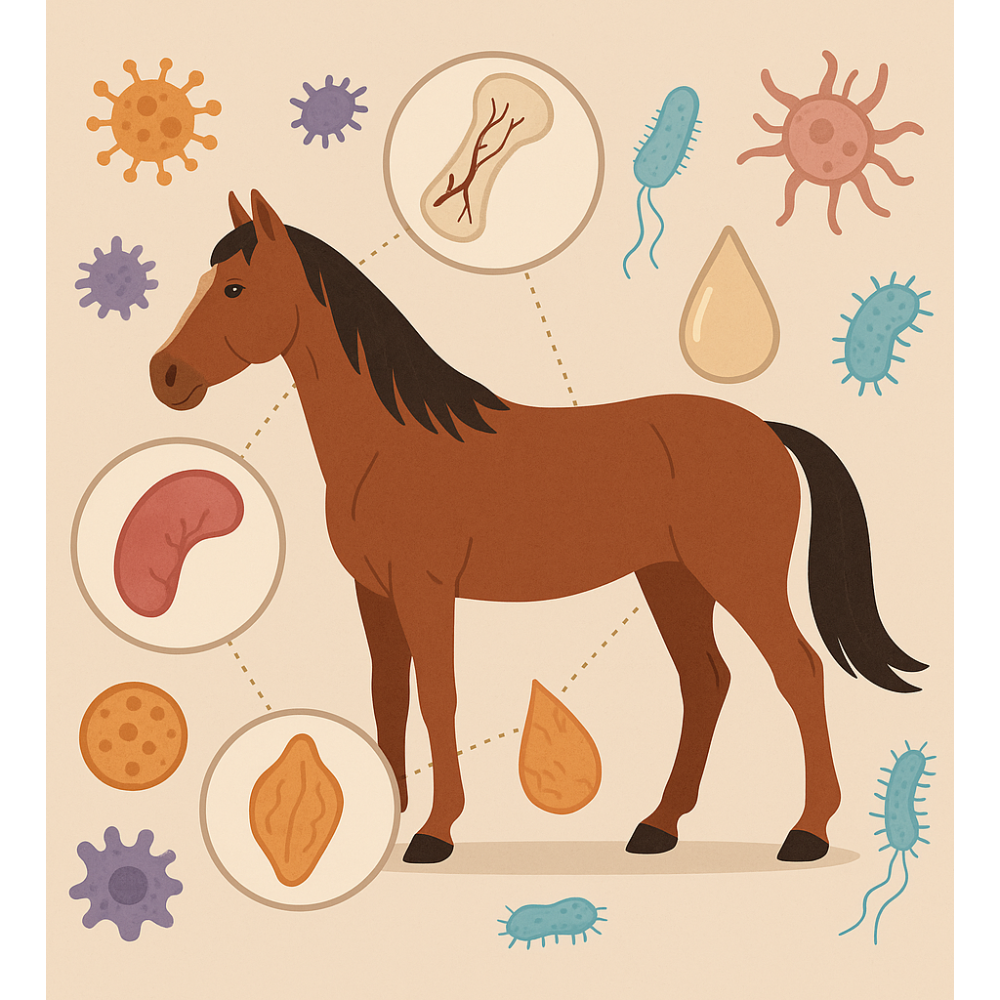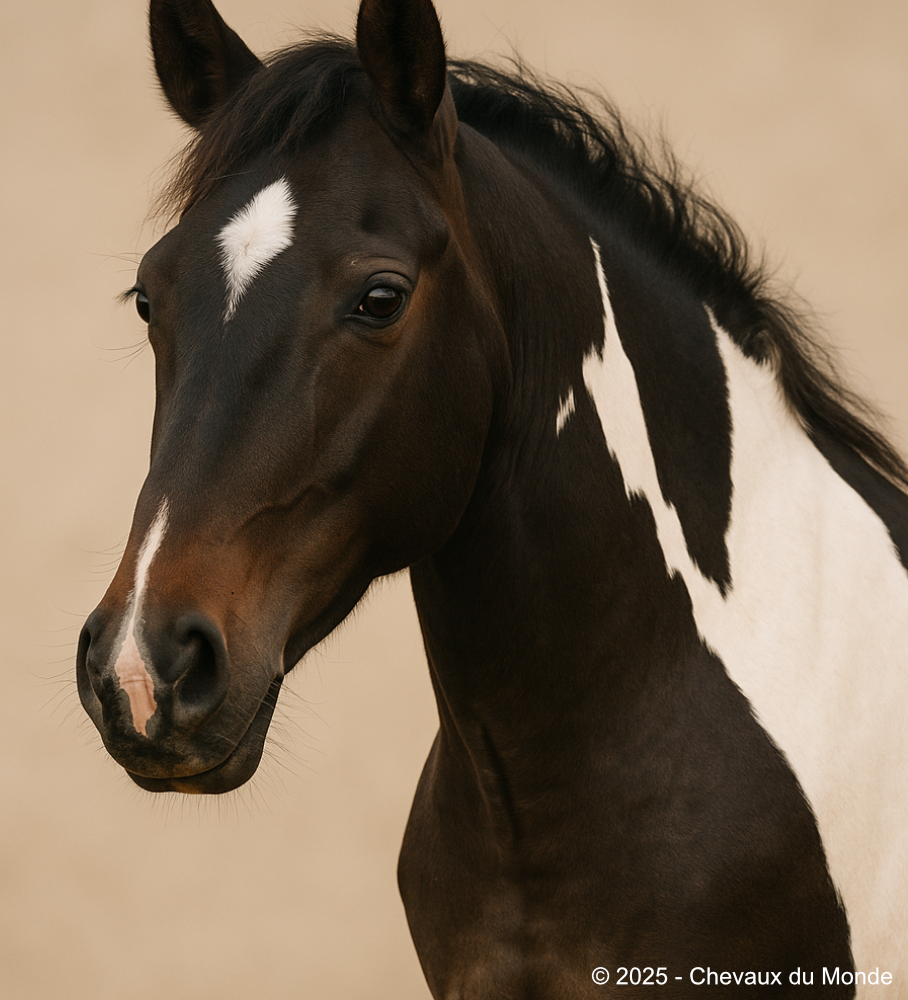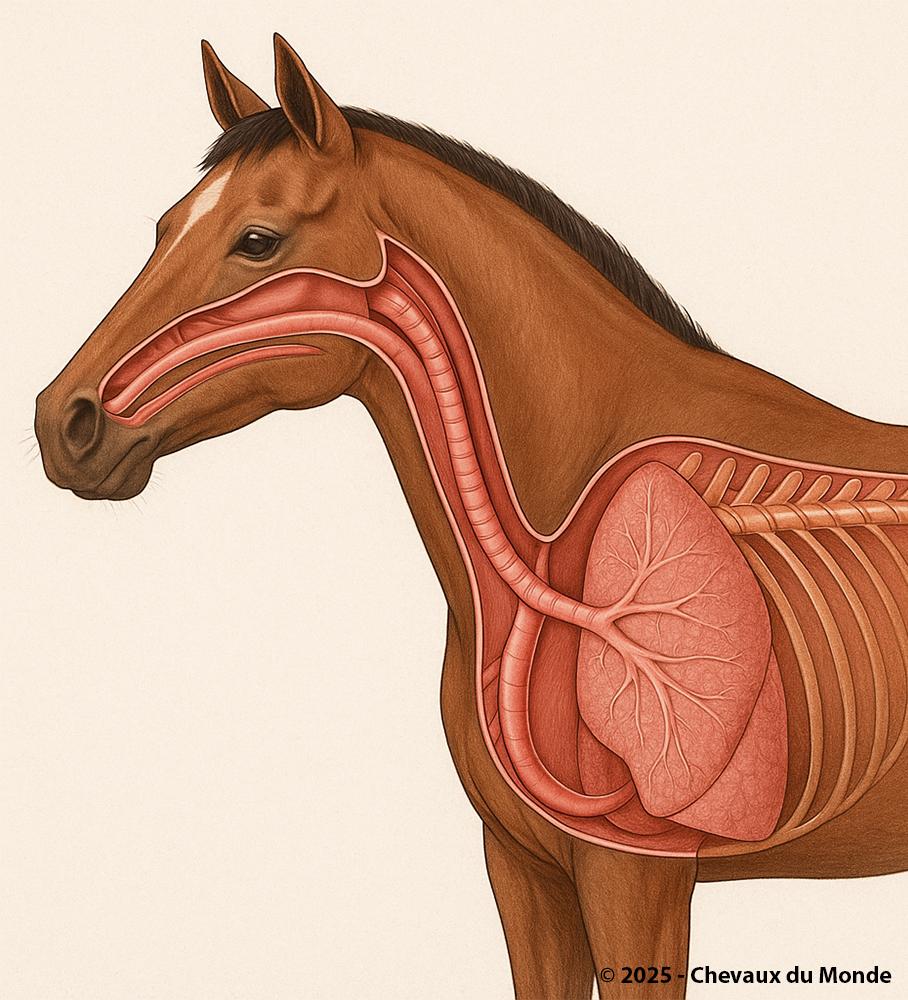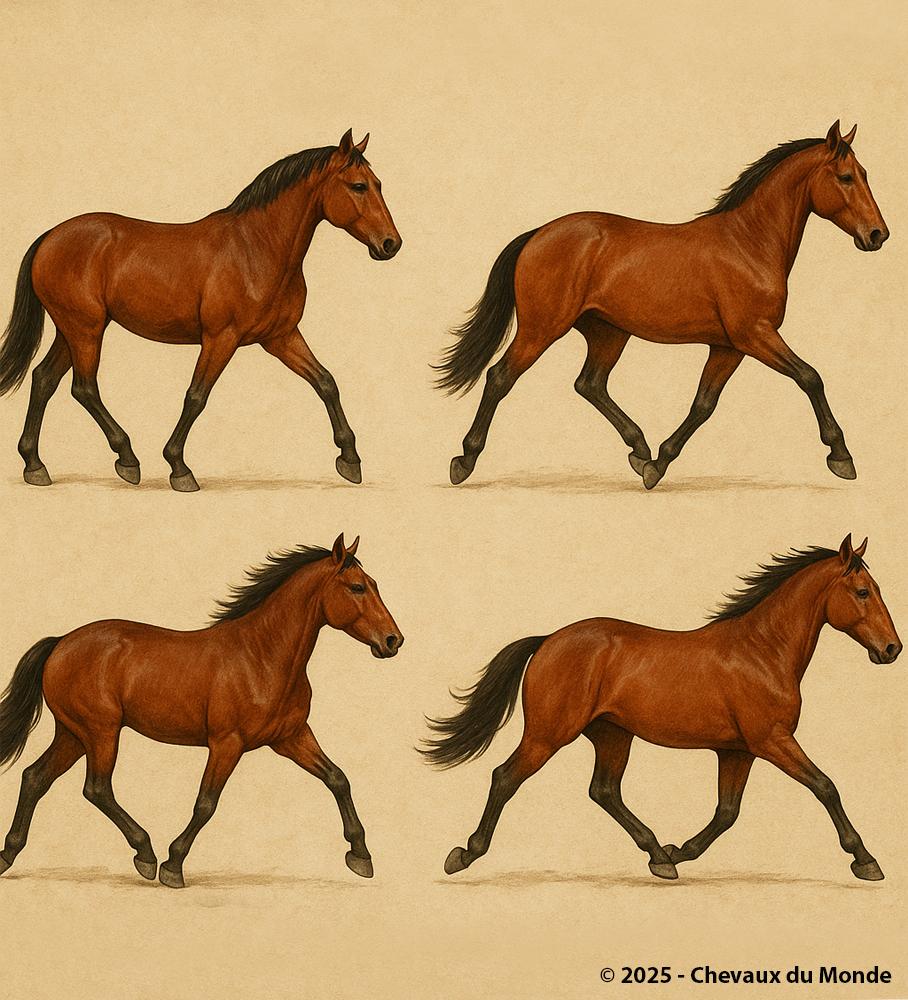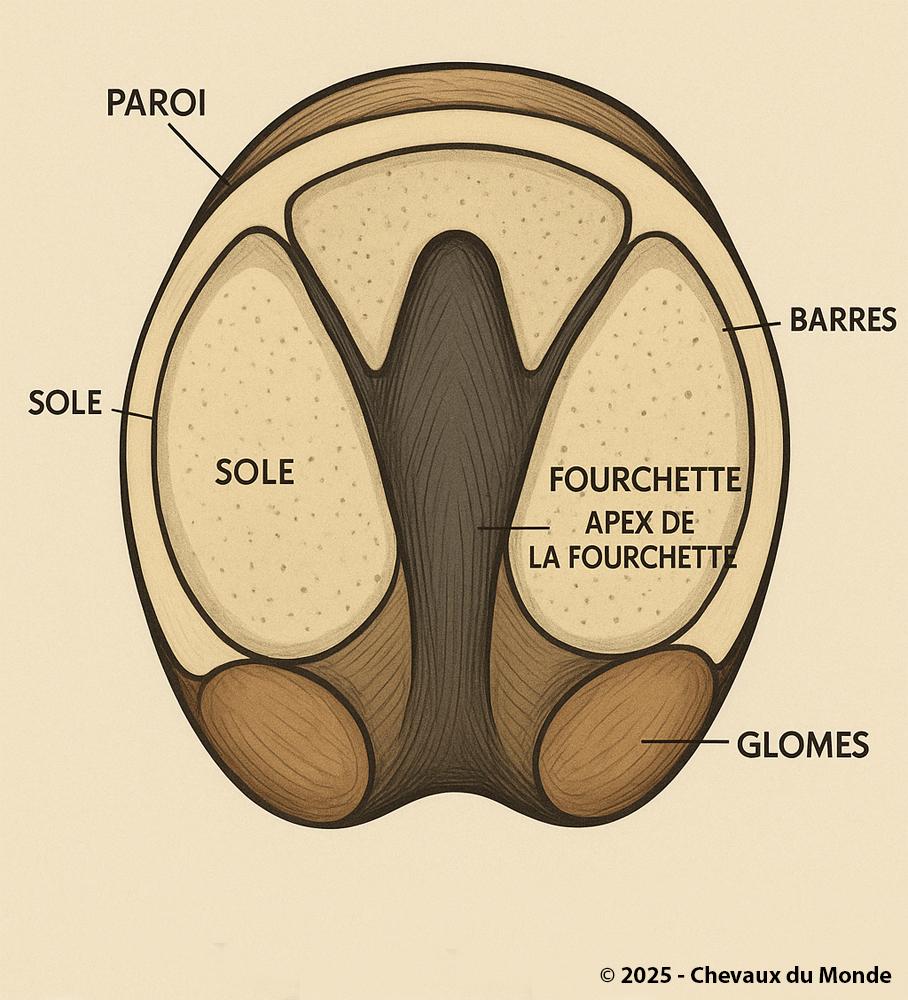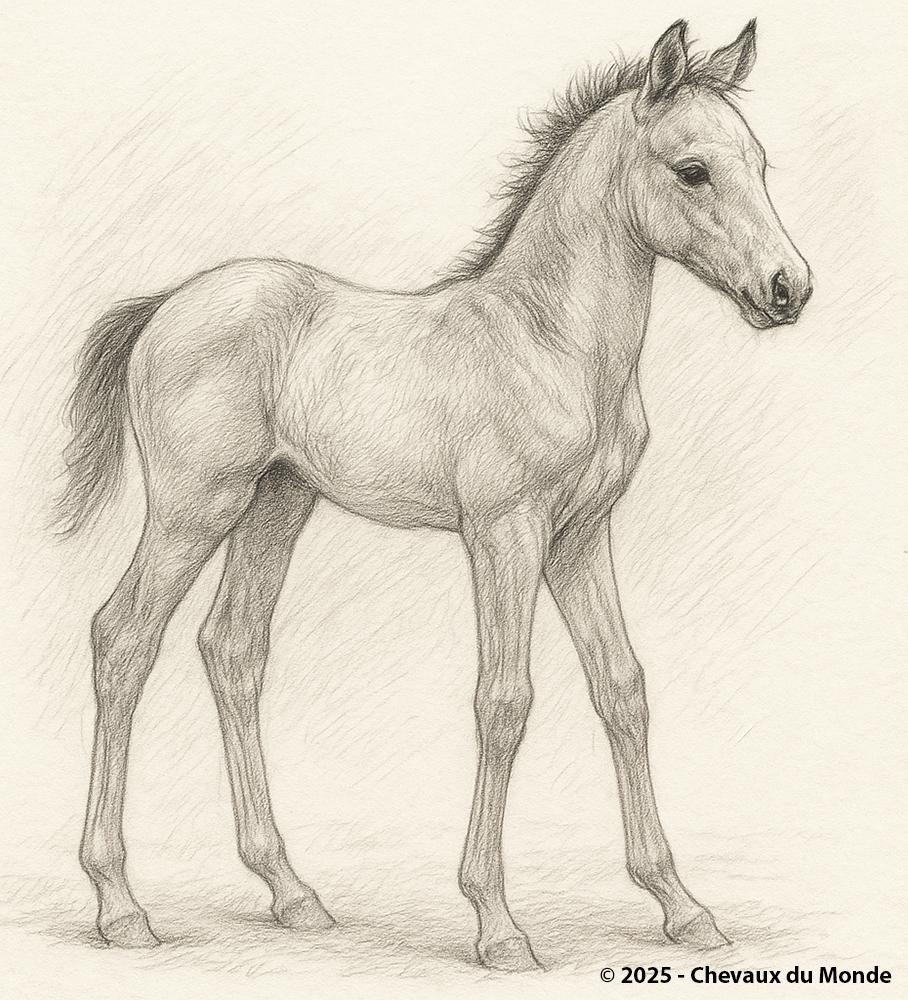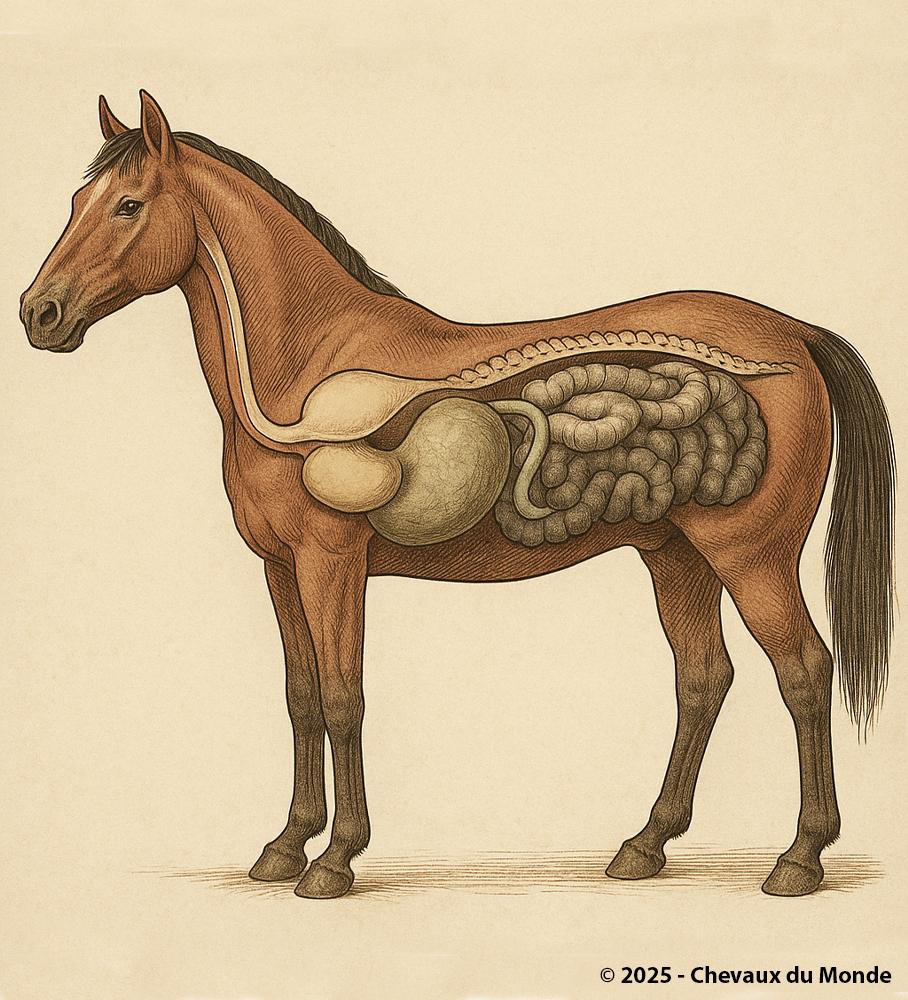SLEEP AND REST CYCLES IN HORSES
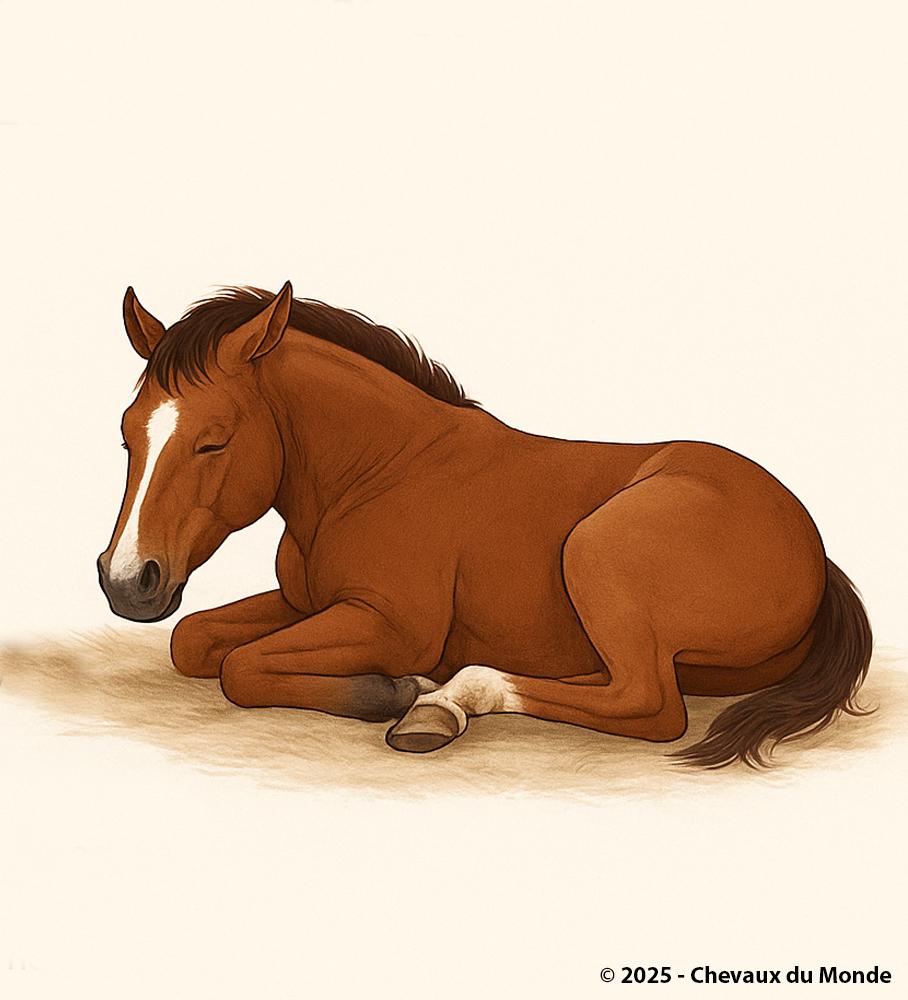
Deep rest: although horses often doze standing up, they need to lie down briefly each day to enter REM sleep.
Unlike humans, the horse has a polyphasic sleep pattern: it sleeps in short periods spread throughout the day and night. This organization is directly linked to its prey instinct, which keeps it vigilant and ready to flee in case of danger. Understanding the horse’s sleep needs is essential to preserving its physical health, mental balance, and performance.
The Different Types of Sleep
Horses experience three main forms of rest:
Standing rest:
Horses can rest while standing thanks to a special anatomical mechanism called the stay apparatus, which locks the joints in the hind legs. This rest corresponds to a state of light sleep or simple muscular relaxation.
- Allows the horse to remain ready to react quickly.
- Does not replace deep sleep.
Light recumbent sleep:
The horse lies down on its sternum (sternal recumbency) and closes its eyes.
- Allows partial muscle relaxation.
- This is the position where the horse spends much of its resting cycles.
– Paradoxical sleep (REM):
This is deep sleep, essential for mental and physical recovery.
- Occurs only when the horse is lying flat on its side (lateral recumbency).
- Muscles are completely relaxed.
- Vital for memory, cell regeneration, and nervous system balance.
- Lasts only a few minutes per cycle.
Sleep Duration and Distribution
– Total duration: An adult horse sleeps 3 to 5 hours per 24 hours, but spends only 20 to 40 minutes in REM sleep.
– Short cycles: Each phase generally lasts 15 to 20 minutes.
Distribution over 24 hours:
- Several rest periods scattered throughout the day.
- Deep sleep often occurs at night, in a calm environment.
- Individual variations: Foals sleep much more (up to 12 hours a day), while older horses may reduce their REM sleep phases.
Factors Influencing Sleep
– Environmental safety: A horse will not lie down to sleep deeply if it feels threatened or lacks space.
– Bedding quality: A comfortable, dry surface encourages recumbent sleep phases.
– Group life: In a herd, some horses stay awake to keep watch, allowing others to sleep deeply.
– Pain or illness: Joint or muscular pain can prevent a horse from lying down, causing a REM sleep deficit.
– Weather conditions: Extreme temperatures may reduce the frequency of recumbent sleep.
Consequences of Sleep Deprivation
A horse deprived of REM sleep may show:
– Reduced performance and chronic fatigue.
– Behavioral changes: irritability, nervousness, decreased focus.
– Physical risks: falling asleep while standing, sudden collapse, injuries from falls.
– Weakened immune system.
Tips for Promoting Good Sleep
– Provide a safe and calm environment.
– Allow enough space for the horse to lie down comfortably.
– Use clean, dry, and thick bedding.
– Maintain a balanced social life with reassuring companions.
– Adjust the workload to avoid overexertion.
The horse has a unique sleep rhythm, short and fragmented, but essential for its health. To ensure it enjoys all sleep phases especially REM sleep it must have a safe and comfortable environment.
"A well-rested horse is calmer, more efficient, and healthier."

